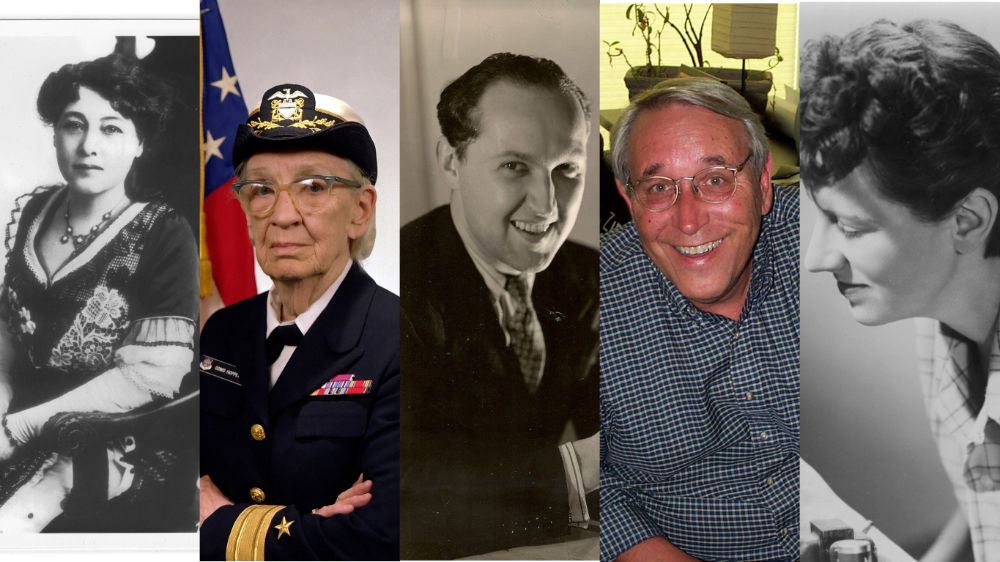
The Visual Effects Society (VES) has announced the newest inductees into the VES Hall of Fame, who will be celebrated at a special event this fall along with other special honorees. The 2022 class of VES Hall of Fame honorees includes Mary Ellen Bute, Alice Guy-Blaché, Grace Hopper, Bill Kovacs, and George Pal.
“Our VES honorees represent a group of exceptional artists, innovators, and professionals who have had a profound impact on the field of visual effects,” said VES Board Chair Lisa Cooke. “We are proud to recognize those who helped shape our shared legacy and continue to inspire future generations of VFX practitioners.”
VES 2022 Hall of Fame Inductees
Mary Ellen Bute (1906–1983). Bute was a pioneer American film animator, producer, and director. She was one of the first female experimental filmmakers and was the creator of some of the first electronically generated film images. Her specialty was visual music. While working in New York City between 1934 and 1958, Butte made 14 short abstract musical films exploring the relationship between sound and image in cinema, and a second body of work focused on the relation of language and cinema through adaptation of literary sources. Many of these were viewed in movie theaters, such as Radio City Music Hall, usually preceding a prestigious film, and several of her abstract films were part of her Seeing Sound series.
Alice Guy-Blaché (1873-1968). Guy-Blaché was a French pioneer filmmaker. She was one of the first filmmakers to make a narrative fiction film, as well as the first woman to direct a film. She experimented with Gaumont’s Chronophone sync-sound system, and with color-tinting, interracial casting, and special effects. As artistic director and a co-founder of Solax Studios in New York in 1912, she made the film A Fool and His Money — probably the first to have an all-African-American cast. The film is now preserved at the National Center for Film and Video Preservation at the American Film Institute for its historical and aesthetic significance. Guy-Blaché was awarded the Légion d’honneur, the highest non-military award France offers, and honored in a Cinématheque Française ceremony.
Grace Hopper (1906-1992). Hopper, known as “Grandma COBOL,” was an American computer scientist and United States Navy rear admiral. One of the first programmers of the Harvard Mark I computer, she was a pioneer of computer programming who invented one of the first linkers. Hopper was the first to devise the theory of machine-independent programming languages, and the FLOW-MATIC programming language she created using this theory was later extended to create COBOL, an early high-level programming language still in use today. The U.S. Navy Arleigh Burke-class guided-missile destroyer USS Hopper was named for her, as was the Cray XE6 “Hopper” supercomputer at NERSC. In 2016, Hopper was posthumously awarded the Presidential Medal of Freedom by President Barack Obama.
Bill Kovacs (1949-2006). Kovacs was a pioneer of commercial computer animation technology. As Vice President of R&D at Robert Abel and Associates, he co-developed the company’s animation software. Kovacs used this software with others in the film Tron. He later co-founded Wavefront Technologies as Chief Technology Officer, leading the development of products such as The Advanced Visualizer as well as animated productions. Along with Richard Childers and Chris Baker, he was a key organizer of the Infinite Illusions exhibit at the Smithsonian Institute. Following his retirement from Wavefront, Kovacs co-founded Instant Effects, and worked as a consultant to Electronic Arts and RezN8, serving as RezN8’s CTO from 2000 until his death. He received a Scientific and Engineering Academy Award from the Academy of Motion Picture Arts and Sciences and two Clio Awards for his work on animated TV commercials.
George Pal (1908-1980). Pal was a Hungarian-American animator, film director, and producer who was principally associated with the fantasy and science-fiction genres. He became an American citizen after emigrating from Europe. He was nominated for Academy Awards (in the category Best Short Subjects, Cartoon) for seven consecutive years (1942–1948) and received an honorary award in 1944. As an animator, he made the Puppetoons series in the 1940s, which led to him being awarded the honorary Oscar for “the development of novel methods and techniques in the production of short subjects known as Puppetoons.” Pal then switched to live-action filmmaking with The Great Rupert. He is best remembered as the producer of several science-fiction and fantasy films in the ’50s and ’60s, four of which were collaborations with director Byron Haskin, including The War of the Worlds. He himself directed Tom Thumb, The Time Machine, and The Wonderful World of the Brothers Grimm.
As previously announced, respected educator and industry leader Pam Hogarth will be the recipient of the 2022 VES Founders Award. The Society designated Jeff Barnes, Patricia “Rose” Duignan, Pam Hogarth, Toni Pace Carstensen, and David Tanaka with Lifetime VES memberships and Pete Docter with Honorary VES Memberships. Click here for more information about the VES Awards and VES Honors sponsorship opportunities.





